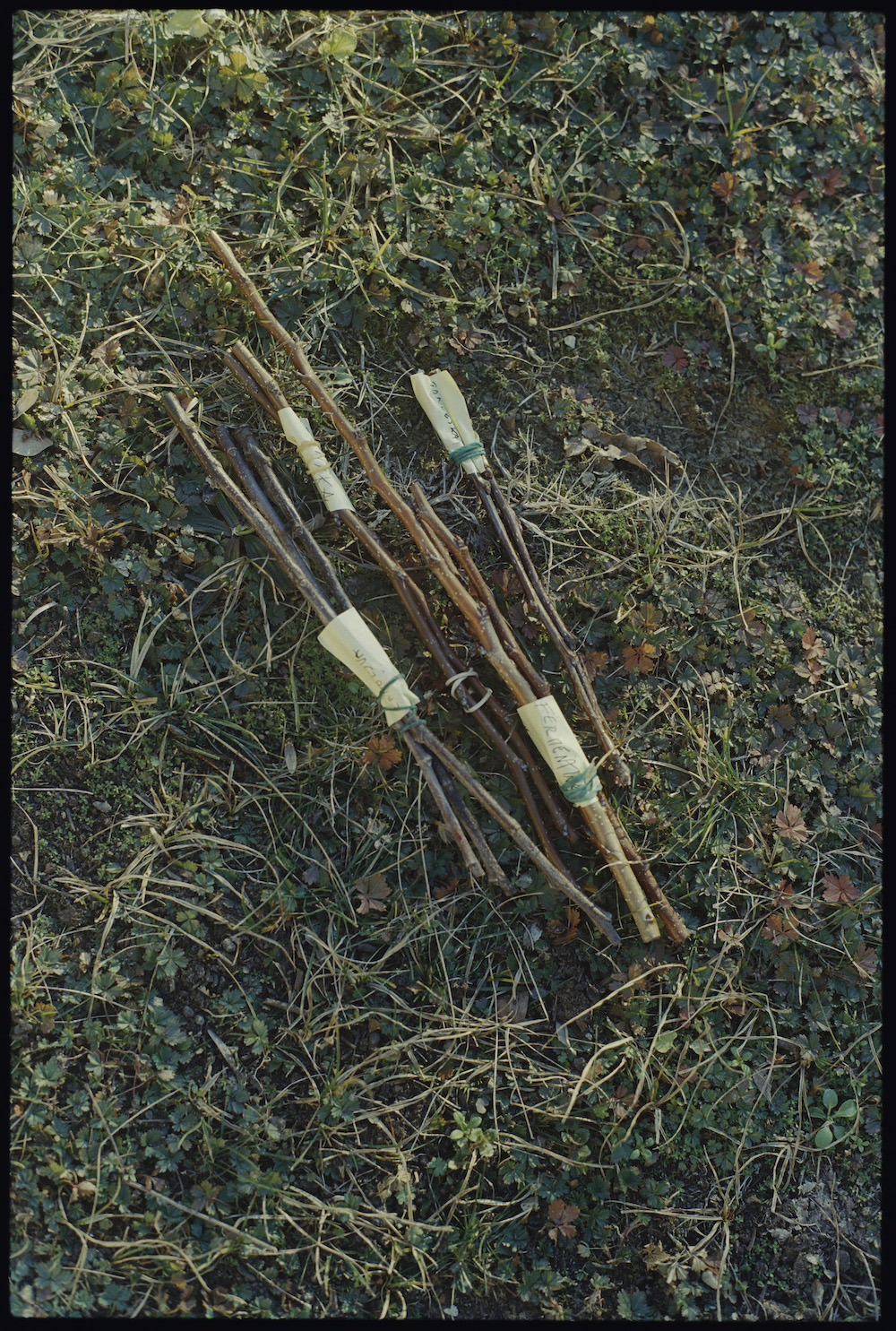
Workshop n. 1 – Grafting
Workshop n.1 – Grafting
Friday, March 7th, from 11.30 on
Sadovnjak Pod Skalco, Kojsko (Goriška Brda)
A workshop on winter grafting of fruit trees will be organized in the orchard of old fruit varieties in Kojsko. Jože Krečič from Podnanos will present various grafting techniques in practice. The workshop is suitable for amateur fruit growers.
The workshop will be held in Slovene language (with spontaneous English or Italian translation, if needed!).
If you'd like to join us, please send us a little note at uncommonfruits@gmail.com.
- - - -
Footnotes to Grafting workshop
Aljaž Škrlep
It took us about an hour to drive from Topolò to Kojsko. It was my first time in Gregor’s orchard. We walked among the fruit trees, observing their quiet transformations. Some were already covered with delicate flowers, while others wore buds that reminded me of clams or mussels, their petals like hidden pearls. Most trees, however, were still waiting for their time to come.
Nearby, the construction of Gregor’s pavilion was in full swing. We gathered on the plateau at the orchard’s entrance, greeting each other softly before finally meeting Mr. Jože Krečič from Podnanos—our winter grafting teacher. The first thing I noticed was his blue overall, the kind one imagines on someone performing precise, delicate operations on fruit trees. And he carried a homemade box full of tools. As he spoke about his grafting knives, clefting tool, tree wound dressing, and the grafting wax mixture he prepared himself—blending tallow, beeswax, linseed oil, spruce or pine resin, and other secret ingredients—you could sense his excitement for these instruments.
Winter grafting, Gregor explained, is unusual in our region. But Jože had discovered that grafting in winter reduces the risk of the grafts drying out. By early March, we were already a bit late—the day was a bit too warm. Ideally, Jože said, November would be the best time. But we went to do the work without hesitation. Our mission was to graft the trees that had rejected their grafts the last time Jože and Gregor attempted to graft them. We often see trees as passive object, but sometimes they are stubborn, resisting the futures we imagine for them.
Because of the heavy winds in his home area, Jože prefers the cleft grafting method, which resists wind the best. Cleft grafting method consists of inserting one or two scions on either one or both sides of the split branch of the rootstock with the cambium lined up along the outer edge—a crucial detail. Without this precise alignment, the graft would not take. When Jože was doing the lining up of the two parts, you could really feel you are observing someone who has knowledge planted deeply in his hands.
The hand is a thinking organ. Watching Jože, I was reminded of how some people seem to think not just with their minds but with their entire bodies, dissolving the false divide between thought and action. Through their work, they offer another way of knowing the world—not just through cognition but through movement, touch, and rhythm. As Maurice Merleau-Ponty once wrote, “The body is our general medium for having a world.” For meeting a world. For shaping a world. For creating a world—as we did on that day, through grafting.
I had to say goodbye a bit early, but I’m sure others had a great time until the end of the workshop on that beautiful sunny day.
- - - -
Video by Antônio Frederico Lasalvia.